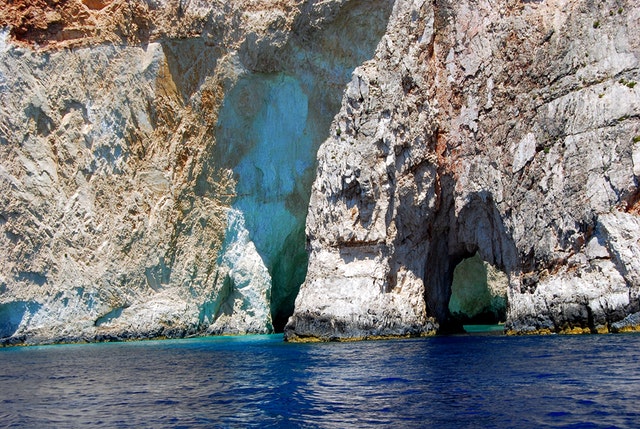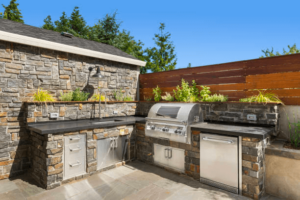A natural stone, limestone is cut from the ground in large chunks or slabs. At Surrey Marble and Granite we work with limestone from all over the world. It arrives at our factory in large slabs which we then cut, shape, finish and polish to make beautiful limestone worktops, tiles, stairs and other objects for our customers. Each of our pieces is made to measure, so wherever your limestone has come from, it’ll get the finishing touch right here in Surrey.
What is limestone?
Limestone is a natural stone formed over thousands of years from the build up of debris at the bottom of the sea bed. It’s mainly made up of crushed shells, coral reefs and similar material with some sand and minerals mixed in. This is why you can sometimes see fossils in limestone worktops or floors, and why limestone areas, like Dorset’s Jurassic Coast, are rich in fossils. Limestone is still forming today in shallow, usually tropical, waters such as in the Caribbean and around the Indonesian islands. As the earth’s crust moves, these undersea limestone beds may be pushed up into mountains, where future generations will be able to quarry them out.
Where is limestone found?
Found all around the world and across the UK, limestone takes a different appearance in different areas and naturally occurring colours vary. White, beige, brown, yellows, greys and greenish shades are common. Historically, people have used limestone which occurred nearby, which is why different areas have their distinctive colours, from the creamy gold of Bath stone to typically Scottish greys. Today, we can access limestone mined around the world which gives us a much greater choice. As limestone is still mined in so many countries, from the UK to the USA, China to Chile, at Surrey Marble and Granite we select the best stones for our customers based on what’s available. As each quarry has its own distinctive colours, our range may be of mixed sources and if a quarry runs out, that’s it – to find a similar shade, we may need to look in a completely different country.
Is limestone good for kitchen worktops?
A relatively soft stone, limestone is easier to cut and shape than granite or slate. As a result, it’s been a popular building material for thousands of years. As an example, the Great Pyramid of Giza was originally covered in beautiful white limestone, although much of it has been removed in the intervening centuries. Limestone is a great choice for kitchen and bathroom worktops as it’s tough, hard to damage and will last decades. Modern technologies let us seal limestone worktops, making them waterproof, stain resistant and easy to clean. Limestone floors, doorsteps, fireplaces, stairs and other features are often found in older British homes, so using limestone to update your bathroom tiles or kitchen worktop is a great way to preserve the character of your home while creating a fresh modern space.





